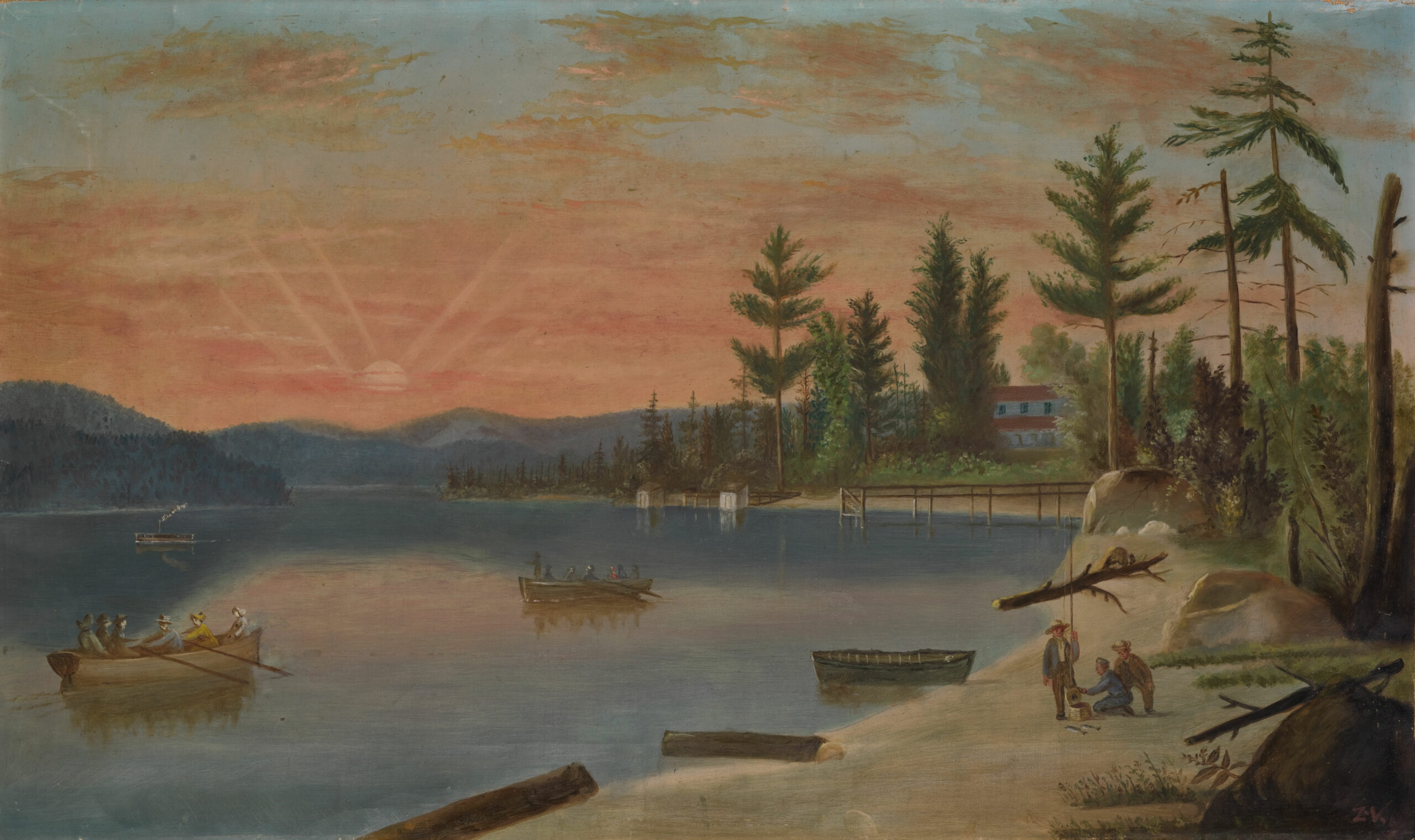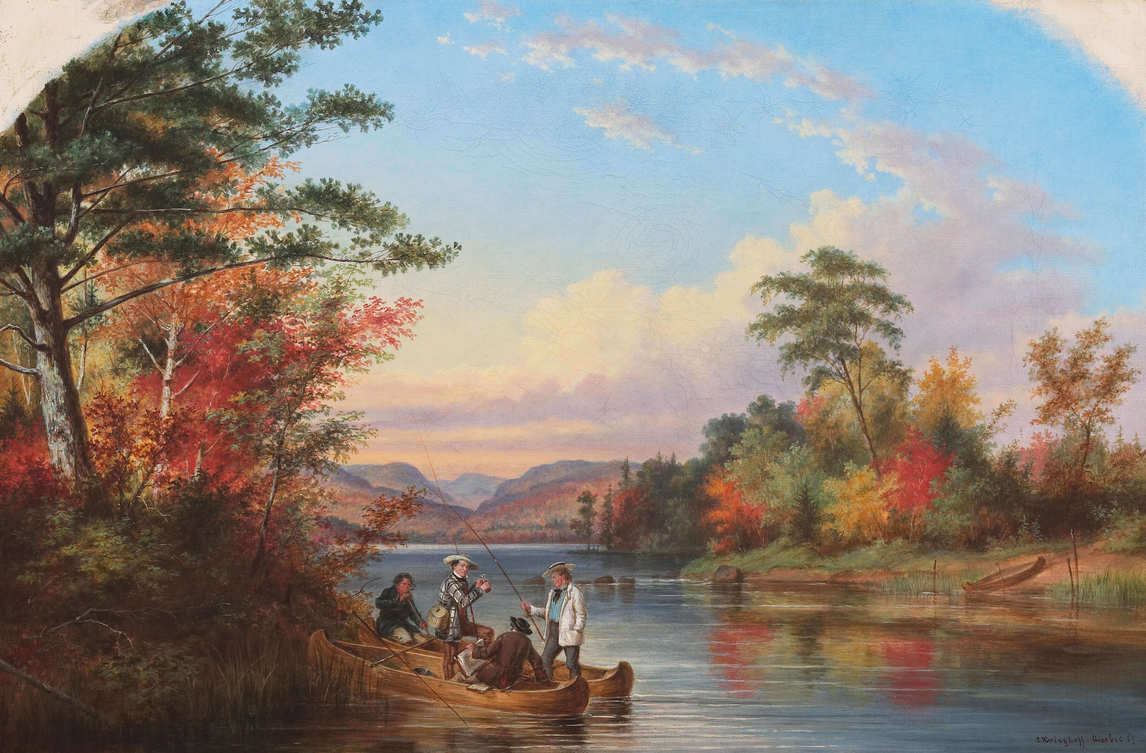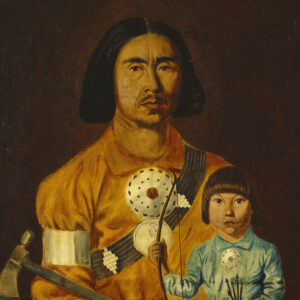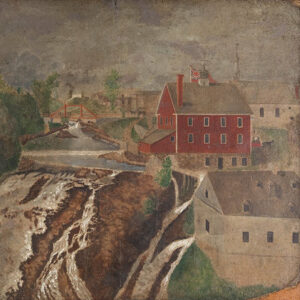Lake Saint-Charles c. 1860

Zacharie Vincent, Lake Saint-Charles, c. 1860
Oil on canvas, 45 x 76.2 cm
Musée national des beaux-arts du Québec
This painting reflects the changes that were taking place on the outskirts of the village of Jeune-Lorette from the mid-nineteenth century onward, as city people from Quebec began to establish country homes and hunting camps in the area. The figures grouped in the boats, the steamboat, the house and boathouses, the jetties, and the tree trunks lying on the riverbank—all of these elements demonstrate the rapid progress of settlement and the arrival of tourists. In a commentary on the painting, the historian Véronique Rozon notes that “the Kabir Kouba or Saint-Charles River had seen an influx of Whites into an area that had been hunted and fished by Hurons ever since their arrival in the seventeenth century. Boatloads of tourists are seen here instead of the canoes of Amerindians, and a house, possibly belonging to a Quebec bourgeois, stands on the shore.”

This landscape is reminiscent of the background in Zacharie Vincent Telari-o-lin, c. 1875–78. All is in correct perspective—the view from the riverbank, the boats, and the house in the distance—except the steamboat, which appears miniaturized. The reflections in the water are accurately depicted.
Cornelius Krieghoff (1815–1872) also painted this region of Quebec, and there is evidence that Vincent may have served as Krieghoff’s guide when he and his friends fished the lake. Krieghoff’s Narrows on Lake St. Charles, 1859, shows the artist in a canoe with his back to the viewer; his fishing companions were identified by the anthropologist Marius Barbeau as John Budden, a man known only as Gibb, and Gabriel Teoriolen. Other sources—such as an anonymous article in La Presse from June 6, 1936—mention “Tehariolen, a Huron of Lorette.” In 1859 Zacharie Vincent was in his forties, as the guide in the stern of the canoe in the painting appears to be. There were other Hurons called Teharolin—the name was spelled various ways but has the same meaning—though only Vincent knew the artistic community. He could well have been the guide pictured in Krieghoff’s painting.

 About the Author
About the Author
 More Online Art Books
More Online Art Books
 Acknowledgements
Acknowledgements